Downtown Victoria Tour
Wharf Street – 1100 Block
1107 Wharf Street – the Richard Carr Warehouse
This small building has an interesting history. It was built circa 1862, most likely by architect Richard Lewis, and once housed the warehouse and office of Richard Carr, whose house is now the Emily Carr House National Historic Site at 207 Government Street and whose daughter, Emily Carr (1871-1945), became a famous Canadian artist and writer.
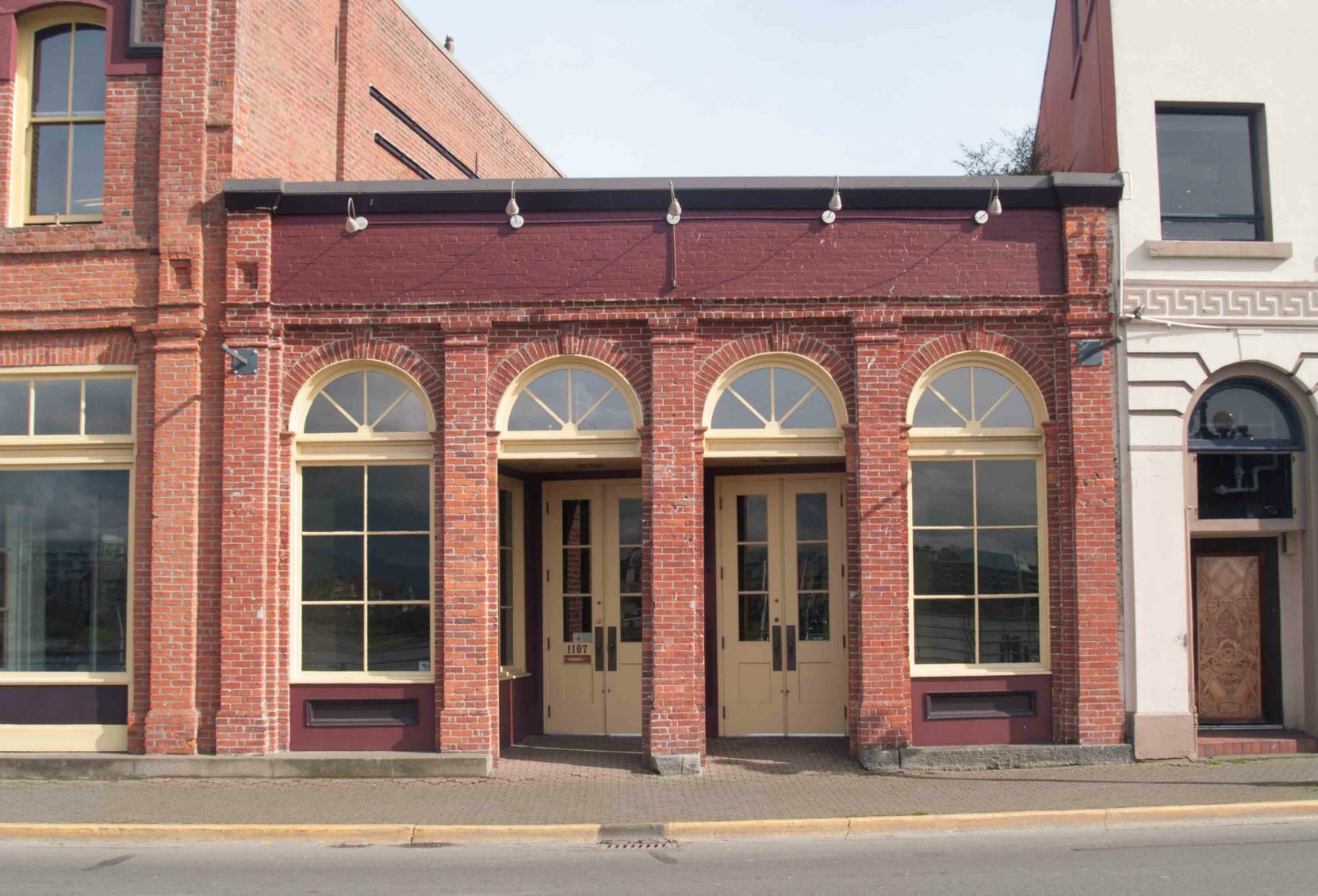
1107 Wharf Street, built circa 1862. It was once the office and warehouse of Richard Carr, the father of well known Canadian artist and writer Emily Carr (1871-1945)
Here’s a map showing the location of 1107 Wharf Street:
Here is a Google Street View image of 1107 Wharf Street:
Here are some more photos of 1107 Wharf Street and 1109 Wharf Street.
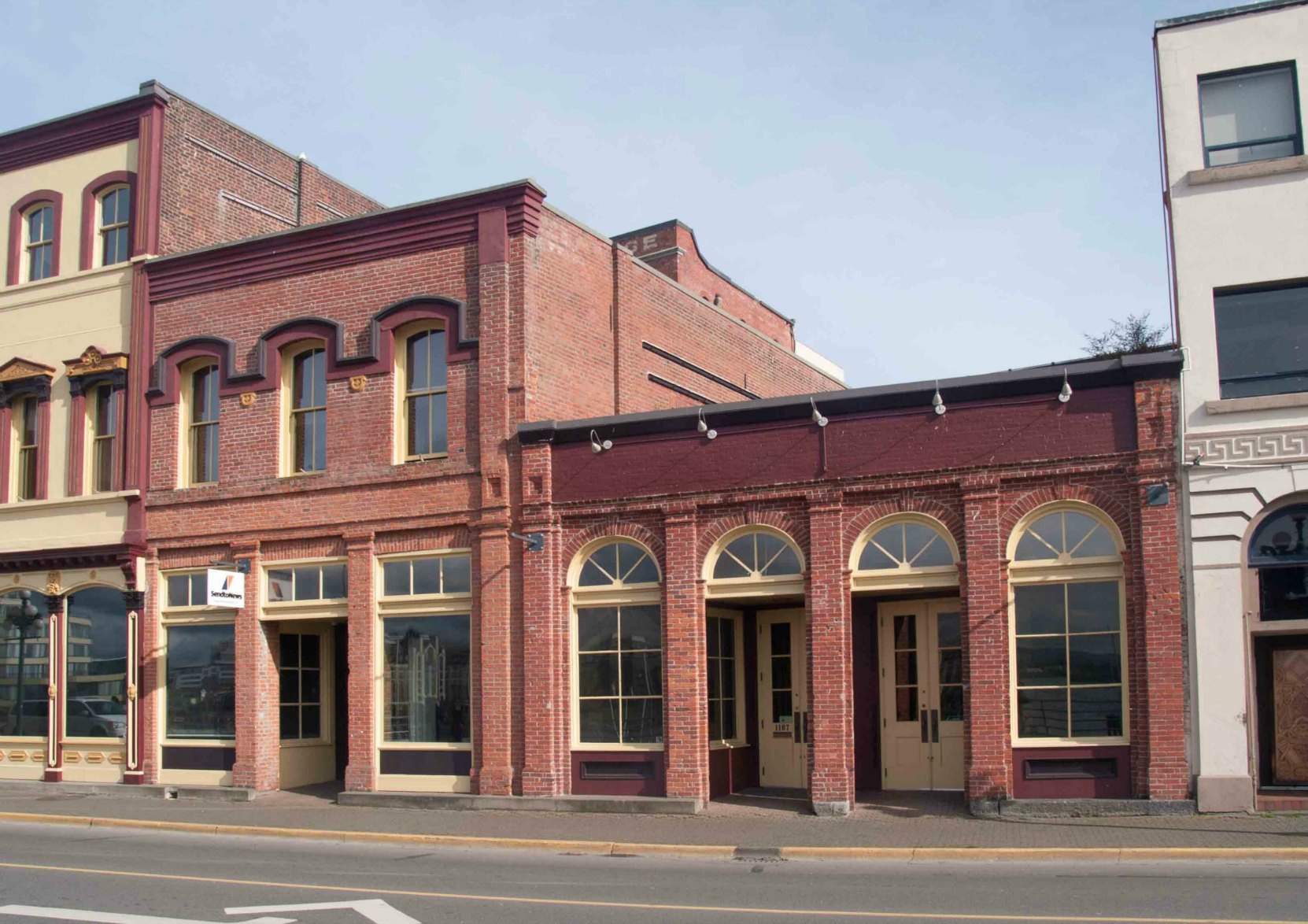
1107 Wharf Street (right) built circa 1862, and 1109 Wharf Street (left), built circa 1861.
Here is a photo of 1107 Wharf Street and 1109 Wharf Street. taken in 2005, before the original brick was exposed on the building exterior.
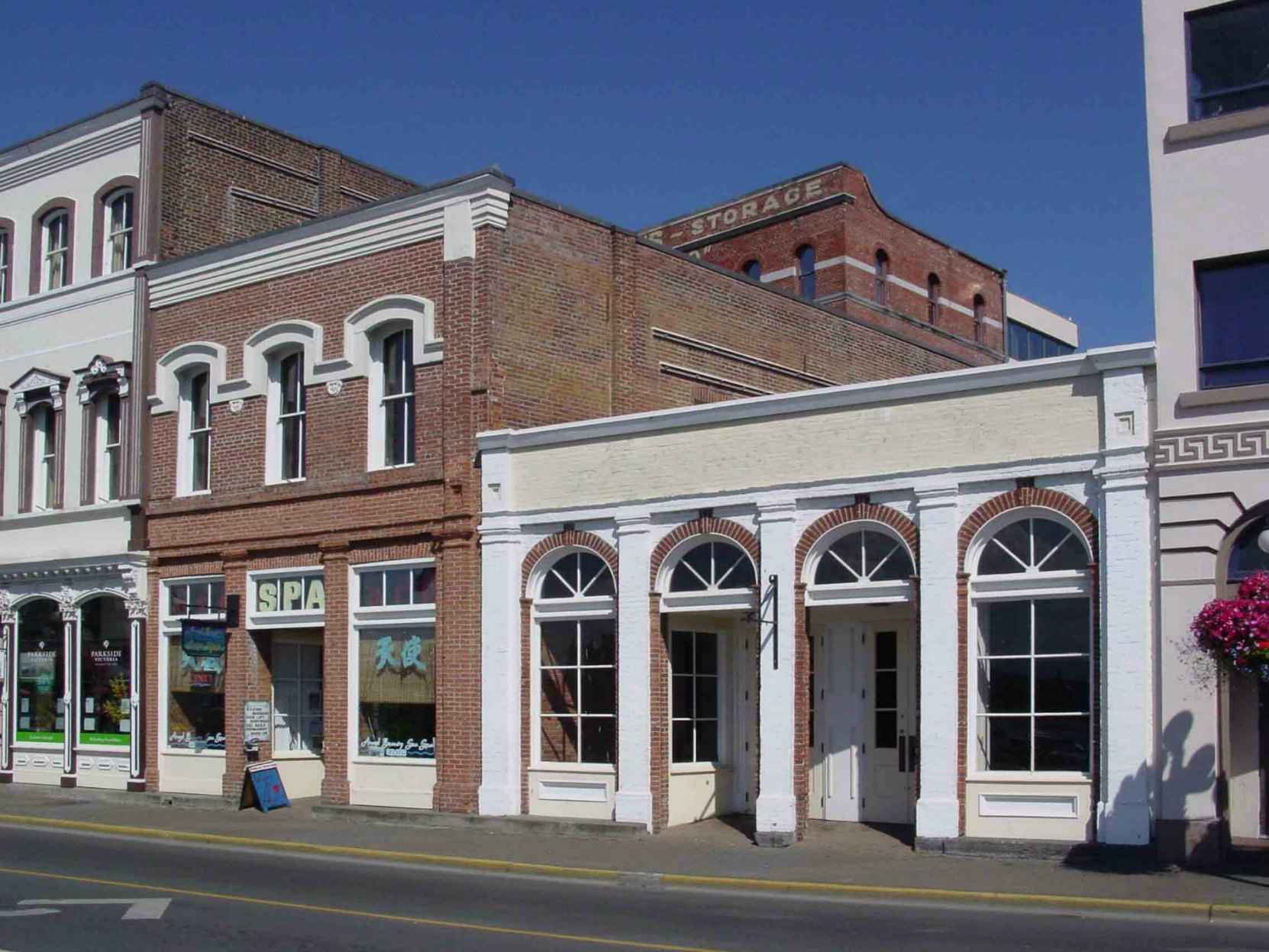
1107 Wharf Street (right) and 1109 Wharf Street (left) in 2005
Additional Information About 1107 Wharf Street
- 1107 Wharf Street is legally consolidated with the adjacent buildings at 1109 Wharf Street, 1117-1125 Wharf Street
- Assessed Value (2019): $10,552,000; Land: $7,706,000; Buildings: $2,846,000
- Assessed Value (2018): $9,804,000; Land: $6,846,000; Buildings: $2,958,000
- Assessed Value (2017): $8,821,000; Land: $5,687,000; Buildings: $3,134,000
- Assessed Value (2016): $8,319,000; Land: $5,008,000; Buildings: $3,311,000
- Assessed Value (2015): $5,636,000; Land: $2,297,000; Buildings: $3,339,000
- Canadian Register of Historic Places
- Victoria Hallmark Society
- City of Victoria Heritage Advisory Committee Meeting – 2012 [note: PDF]
- University of Victoria – Maltwood Gallery
Emily Carr’s reminiscences of her Victoria childhood, in her 1940’s bestseller The Book of Small, contain an excellent description of this section of Wharf Street and her father’s business premises, now 1107 Wharf Street, during Emily’s childhood in the 1870’s and 1880’s:
“My father [Richard Carr] was a wholesale importer of provisions, wines and cigars. His store was down on Wharf Street among other wholesale places. The part of Wharf Street where father’s store stood had only one side. In front of the store was a great hole where the bank of the shoreline had been dug out to build wharves and sheds. [note: the “great hole” is now the parking lot on the west side of Wharf Street. It is the Fort Victoria National Historic Site] You could look over the top of these to the Songhees Indian Reserve on the opposite side of the Harbour. To one side of the hole stood the Hudson’s Bay Company store [since demolished] – a long, low building with a verandah. The Indians came across the Harbour in their dugout canoes to trade at the store.
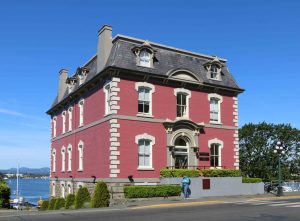
The Customs House, 1002 Wharf Street, built in 1874-75.
At the opposite side of the Wharf Street hole stood the Customs House [still standing at 1002 Wharf Street], close to the water’s edge. Made of red brick, it was three storeys high and quite square……
The inside of Father’s store was deep and dark. Cases, crates, and barrels stood piled on top of another right up to the ceiling, with just a narrow lane running down the middle and ending in what was called “the yard” – not a yard at all, only a strong, rough board shed filled with ‘empties’ and cats. There were no windows; the cats crawled in and out of the ‘empties’ hunting for rats, their eyes shining in the black……
Father had every colour of cat. He took fresh milk in a bottle from home [note: the Emily Carr house at 207 Government Street] at every morning to them; he said a diet of straight rat was not healthy for cats. Only one of them was a comfortable, particular cat and came to sit by the stove in father’s office. The rest were just wholesale cats.
Father’s office was beside the open front of his big store and in it Father sat in front of a large, square table covered with green baize; on it in front of him was a cupboard full of drawers and pigeon-holes. He sat in a high-backed wicker armchair. His beard was white and, after he went bald, he wore a black skull cap. A fat, round stove, nearly always red hot, was between father’s table and the long, high desk where his men stood or sat on high stools doing their books when they were not trundling boxes on a truck. There was an iron safe in the one corner of the office with a letter press on top and there were two yellow chairs for customers to sit on while father wrote their orders in his book. Everything was dozened in father’s store: his was not a business that sold things by pinches in paper bags. High along the wall ran four long shelves holding glass jars of sample English sweets – all pure, all wholesome, all English. The labels said so”
The Victoria Hallmark Society suggests the original owner of 1107 Wharf Street in the 1860’s was Robert Burnaby (1828-1878), for whom the City of Burnaby is named.
1107 Wharf Street was purchased by the Province of B.C. in the 1970’s and was legally consolidated with 1109 Wharf Street and 1117-1125 Wharf Street into a single building used as provincial government office space. The new legal address of the entire complex is 1107 Wharf Street. It is listed on the Canadian Register of Historic Places as part of the Rithet Building.
In November 2015 these buildings were put on the market and were sold for $10,380,000 in January 2016.
Here are some more buildings associated with Emily Carr:
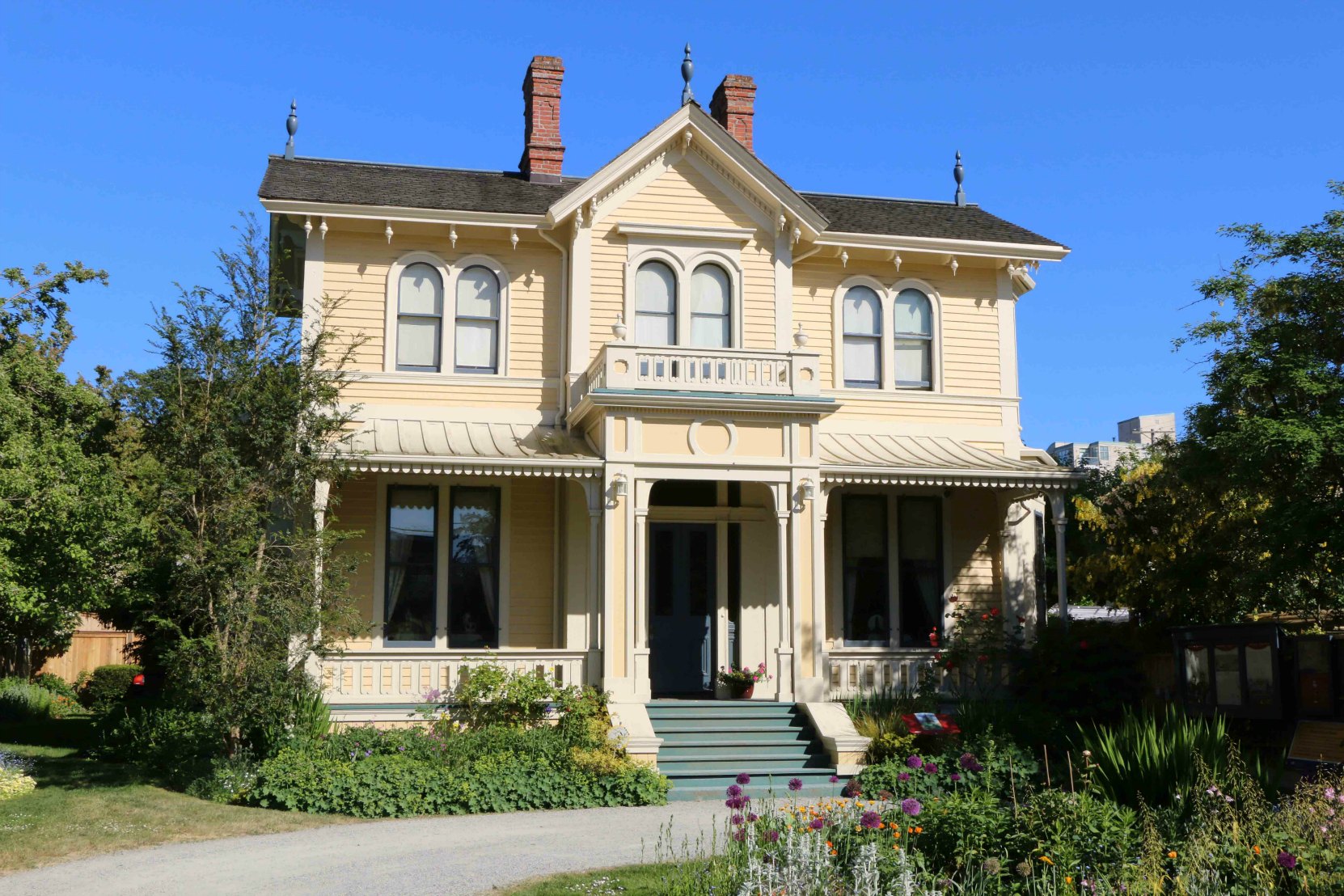
Emily Carr House, 207 Government Street, built circa 1863, is now a National Historic Site of Canada
Emily Carr House, 207 Government Street
Emily Carr House, 207 Government Street, built circa 1863, is now a National Historic Site of Canada
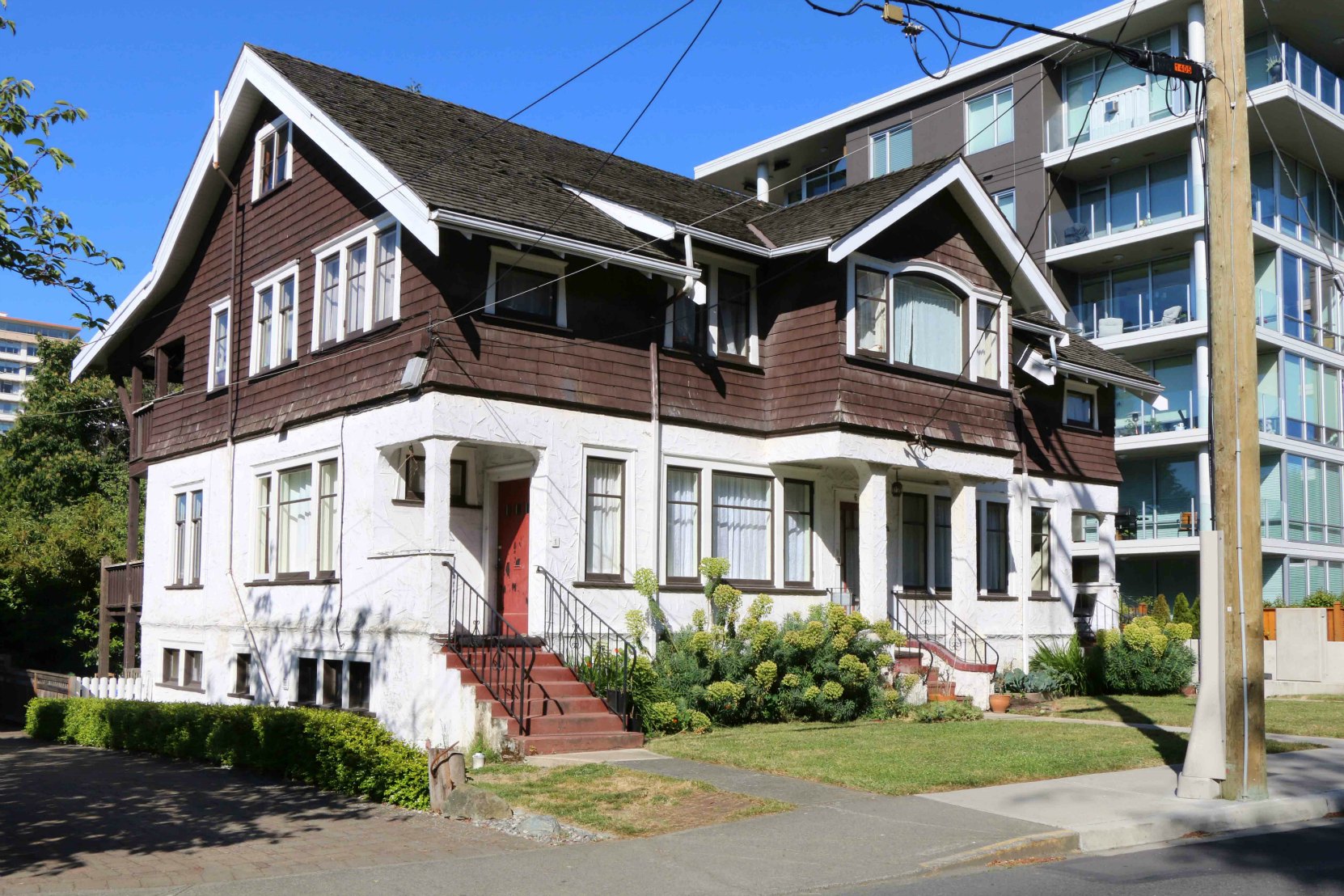
Emily Carr’s House of All Sorts, 646 Simcoe Street in Victoria’s James Bay district.
Emily Carr’s House of All Sorts, 646 Simcoe Street in Victoria’s James Bay district.
Would you like to leave a comment or question about anything on this page?
Error: Contact form not found.

Get Social